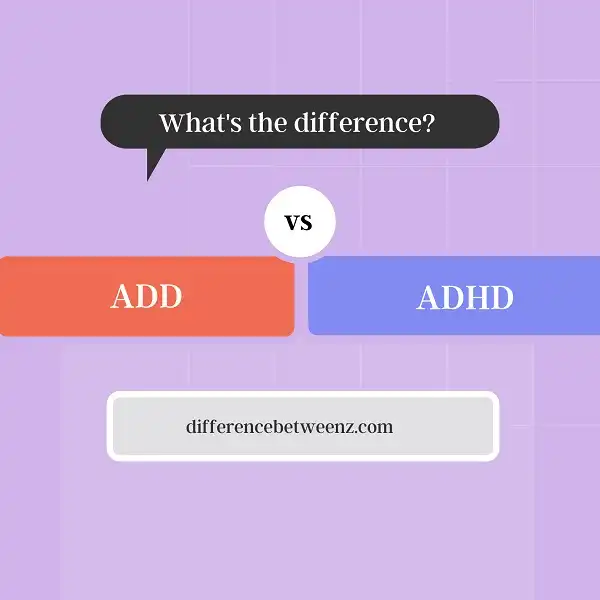When most people hear the term “ADD” or “ADHD,” they automatically think of a child who is bouncing off the walls and can’t sit still in class. While this may be one common characteristic of someone with ADD or ADHD, it is not the only one. In fact, there are many differences between ADD and ADHD that can be difficult to understand if you don’t have either condition. This blog post will discuss some of those key differences.
What is ADD?
Attention Deficit Disorder (ADD) is a mental disorder that is characterized by difficulty sustaining attention. Although it is commonly diagnosed in childhood, it can also affect adults. People with ADD may be easily distracted, have trouble completing tasks, and be highly impulsive. As a result, they may struggle with academics, work, and personal relationships. The exact cause of ADD is unknown, but it is thought to be caused by a combination of genetic and environmental factors. Treatment typically involves medication and/or therapy. With proper treatment, people with ADD can lead fulfilling lives.
What is ADHD?
Attention deficit/hyperactivity disorder (ADHD) is a neurological condition that affects approximately 5% of school-aged children. symptoms include difficulty paying attention, impulsivity, and hyperactivity. While the exact cause of ADHD is unknown, it is believed to be caused by a combination of genetic and environmental factors. Treatment for ADHD typically includes a combination of medication and behavioral therapy. In some cases, accommodations such as shortened class periods or extended time on tests may also be necessary. With proper treatment, most people with ADHD are able to successfully manage their symptoms and lead productive lives.
Difference between ADD and ADHD
When most people think of attention deficit disorder (ADD), they imagine a hyperactive child who can’t sit still in class. While it’s true that children with ADD may be more likely to exhibit these behaviors, not all children with ADD are hyperactive. In fact, symptoms of ADD can vary widely from person to person. For some people, ADD may cause problems with concentration and organization, while for others it may result in impulsive behavior and mood swings. Attention deficit hyperactivity disorder (ADHD) is a similar condition, but it is characterized by both inattention and hyperactivity. People with ADHD often have difficulty sustaining attention, controlling impulses, and staying still for long periods of time. Although ADD and ADHD share some common symptoms, they are two distinct conditions with different causes and treatment options.
Conclusion
ADD and ADHD are two of the most commonly diagnosed disorders in children, but they can also persist into adulthood. While both conditions share some common symptoms, there are key differences between them that are important to understand. If you think you or a loved one may have one of these disorders, it’s best to consult with a healthcare professional for an accurate diagnosis and treatment plan.


